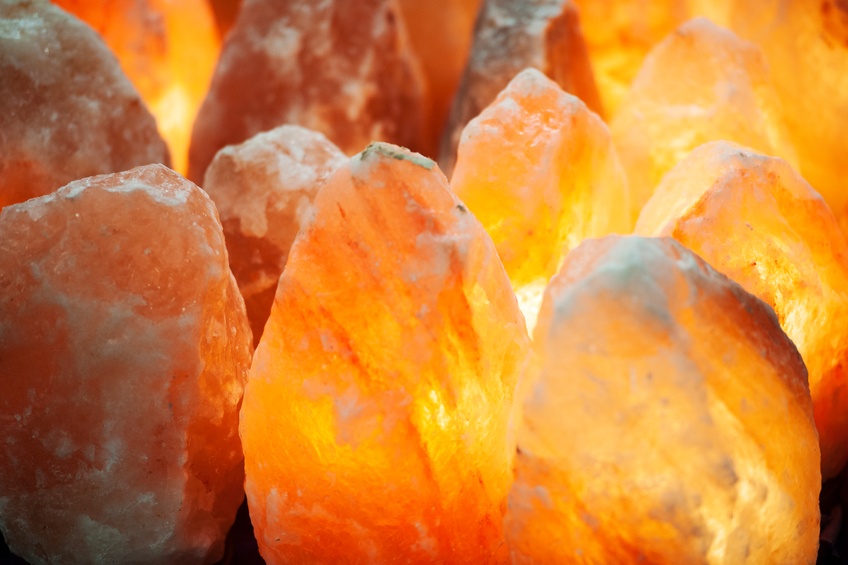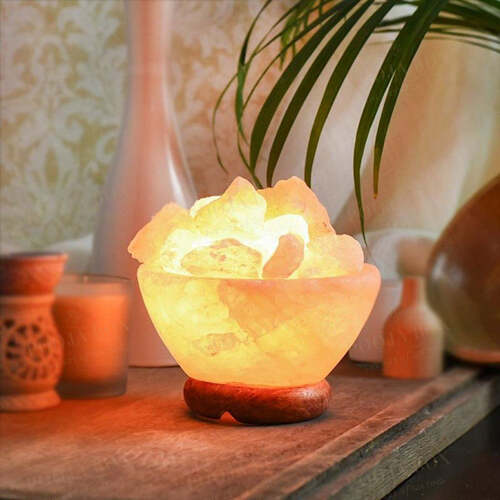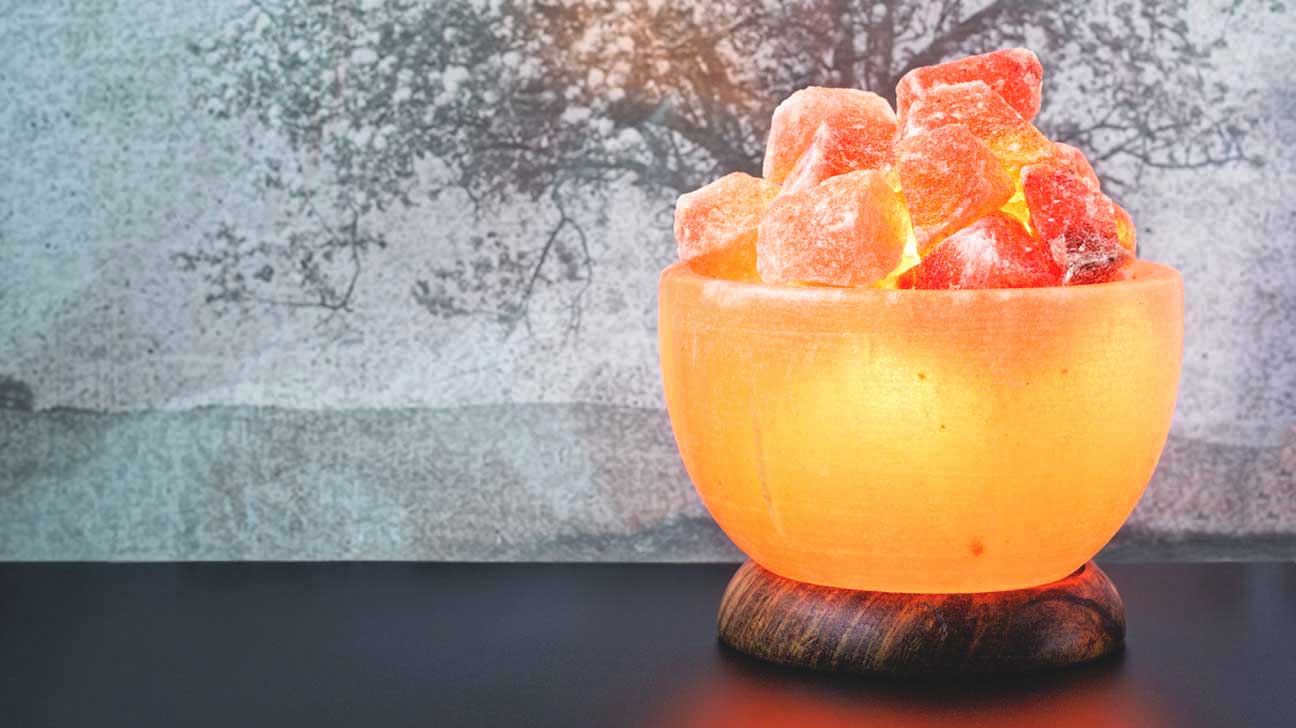No, salt lamps don’t use a lot of electricity. Salt lamps are known for their soothing glow and potential health benefits, but when it comes to electricity usage, the answer is clear, they use very little electricity. The typical salt lamp, even those on the larger side, usually consumes between 15 to 25 watts of electricity, which is equivalent to the energy usage of a nightlight.
In fact, they are quite energy-efficient and won’t significantly impact your electricity bill. However, it’s always a good idea to turn them off when not in use to maximize their energy efficiency and longevity while still enjoying their calming ambiance.
What Are Salt Lamps?

Salt lamps are decorative lighting fixtures made from large chunks of natural salt crystals, typically sourced from salt mines in countries like Pakistan, Poland, or the Himalayas. These salt crystals are often of a pink or orange hue, although they can range in color. The central feature of a salt lamp is a hollowed-out space within the crystal, where a light bulb or candle is placed.
When the lamp is illuminated, it emits a warm, soothing glow that is often described as both aesthetically pleasing and calming. The unique color and ambiance created by the salt lamp are attributed to the way it scatters and refracts the light. Additionally, some proponents claim that salt lamps produce negative ions, which are believed to have potential health benefits, though scientific evidence supporting these claims is limited.
How Do Salt Lamps Work?
Salt lamps are not just beautiful home decor pieces; they also have unique properties that create a soothing atmosphere.
Salt Crystal Formation
Salt Crystal Source: Salt lamps are crafted from natural salt crystals, typically mined from places like the Himalayas or Pakistan. These crystals come in various shades, from pink to orange, and even white.
Hollowed Interior: Inside the salt crystal, a hollow space is created to accommodate a small light bulb or candle. This space allows the light to shine through, creating the soft, warm glow that salt lamps are known for.
Hygroscopic Properties
Attracting Moisture: Salt is hygroscopic, meaning it attracts moisture from the air. As the lamp warms up due to the light source inside, it gently releases the water vapor it has absorbed from the surrounding environment.
Humidity Impact: This release of moisture can have a subtle effect on indoor humidity, particularly in smaller spaces. It’s important to note that the impact on humidity is usually minimal and may not be significant in larger rooms.
Ambiance and Visual Appeal
Scattering and Refraction: The unique crystalline structure of the salt scatters and refracts the light emitted by the lamp. This scattering creates a calming and aesthetically pleasing ambiance in the room.
Soothing Glow: The warm, gentle glow of a salt lamp is often appreciated for its ability to create a cozy and tranquil atmosphere, making it a popular choice for enhancing the ambiance of a room.
How Much Electricity Do Salt Lamps Typically Consume?
Salt lamps are known for their minimal electricity consumption. Typically, they consume very little electricity, making them an energy-efficient lighting option. The exact energy usage can vary slightly depending on the size and type of bulb used, but on average, here’s what you can expect
- Small salt lamps (5-7 pounds) with a 15-watt bulb consume about 0.015 kilowatt-hours (kWh) of electricity for every hour of use. This is roughly equivalent to the energy used by a nightlight.
- Larger salt lamps (12-20 pounds) with a 25-watt bulb may consume approximately 0.025 kWh per hour. Again, this is still quite low compared to most household appliances.
To put it in perspective, running a small salt lamp for 24 hours would consume around 0.36 kWh, which is a very modest amount of electricity. Even larger salt lamps won’t have a significant impact on your energy bill. So, you can enjoy the cozy ambiance of a salt lamp without worrying about high electricity costs.
What Factors Influence The Electricity Usage Of Salt Lamps?
The electricity usage of salt lamps is generally low and fairly consistent, but several factors can influence their energy consumption
Bulb Wattage
Bulb Selection: The wattage of the bulb used in your salt lamp is a primary determinant of electricity usage. Lower-wattage bulbs, such as 15 watts, consume less energy, while higher-wattage bulbs, like 25 watts, use slightly more electricity.
Energy-Efficient Bulbs: Choosing for energy-efficient bulbs, like LED bulbs, can significantly reduce electricity usage. These bulbs provide adequate illumination while consuming a fraction of the energy compared to incandescent bulbs.
Lamp Size
Larger Lamps: Larger salt lamps require more energy to illuminate effectively. They may need higher-wattage bulbs, resulting in slightly higher electricity consumption.
Smaller Lamps: Smaller salt lamps, on the other hand, typically use lower-wattage bulbs, making them more energy-efficient options.
Duration of Use
Extended Use: The longer you keep your salt lamp turned on, the more electricity it will consume. If you use it for many hours each day, the cumulative energy usage will be higher.
Occasional Use: If you use your salt lamp for shorter periods or on an occasional basis, its impact on your electricity bill will be minimal.
Electricity Rates
The cost of electricity varies by region and utility provider. Higher electricity rates will naturally result in higher costs associated with running the lamp.
Number of Lamps
If you have multiple salt lamps in one room or throughout your home, the combined electricity usage can be more significant. Consider the cumulative effect if you use several lamps simultaneously.
Energy-Conscious Practices
Making it a habit to turn off your salt lamp when it’s not needed can reduce its electricity consumption and your overall energy usage.
How Can You Calculate The Cost Of Running A Salt Lamp In Your Home?

Calculating the cost of running a salt lamp in your home is a straightforward process. You’ll need to consider the wattage of the bulb in the lamp, the number of hours it’s used per day, and your electricity rate. Here’s a simple formula to calculate the cost
Cost per Day = (Wattage of Bulb / 1000) x Hours of Use per Day x Electricity Rate per kWh
Let’s break down each component
- Wattage of Bulb: This is the power consumption of the bulb in the salt lamp, typically measured in watts (W). For example, if you’re using a 15-watt bulb, this value would be 15.
- Hours of Use per Day: Determine how many hours per day you keep the salt lamp turned on. For example, if it’s on for 6 hours, this value would be 6.
- Electricity Rate per kWh: This is the cost of electricity per kilowatt-hour (kWh) in your area. You can find this information on your electricity bill or by contacting your utility provider. It’s usually measured in cents or dollars per kWh.
Example Calculation
Imagine you have a 15-watt salt lamp, and you use it for 6 hours a day. Your electricity rate is $0.12 per kWh:
- Cost per Day = (15 / 1000) x 6 x $0.12
- Cost per Day = (0.015) x 6 x $0.12
- Cost per Day = $0.0108
So, in this example, it costs approximately $0.0108 per day to run your 15-watt salt lamp for 6 hours. To find the monthly or yearly cost, simply multiply the daily cost by the number of days in the respective period.
FAQ
Can I leave a salt lamp on all the time?
Yes, you can leave a salt lamp on continuously. They are designed for 24/7 use and are safe to keep on for extended periods.
Are Himalayan salt lamps energy efficient?
Yes, Himalayan salt lamps are energy-efficient. They use very little electricity and won’t significantly impact your energy bill.
Where not to put a salt lamp?
Avoid placing salt lamps in areas with excessive moisture, like bathrooms, as moisture can cause the salt to dissolve over time.
Should you sleep next to a salt lamp?
Sleeping next to a salt lamp can create a calming atmosphere, but it’s a matter of personal preference. Some people find it enhances their sleep quality.
Do salt lamps purify the air?
Salt lamps can help improve air quality by attracting and trapping impurities. But they are not a substitute for air purifiers.
Is it OK to touch a salt lamp?
Yes, It’s fine to touch a salt lamp, but clean your hands afterward as the lamp’s surface may accumulate dirt and oils over time.
How long do salt lamps last?
Salt lamps can last for many years. However, their lifespan depends on factors like size, usage, and the quality of the salt.
Do salt lamps attract bugs?
Salt lamps may attract moisture, but they are not a strong magnet for bugs. Keeping your lamp in a dry area can help prevent this.
What are the cons of a salt lamp?
Cons of salt lamps may include their fragility, the need for occasional cleaning, and the limited impact on air purification compared to dedicated devices.
Final words
On the whole, salt lamps are a gentle addition to your home that won’t lead to hefty electricity bills. These calming fixtures use minimal electricity due to their low-wattage bulbs. Their warm, soothing glow creates a cozy ambiance without straining your wallet. While they may not be energy-efficient powerhouses, they offer unique benefits beyond mere illumination, from potential health advantages to the simple joy of adding tranquility to your space.
So, if you’re concerned about electricity usage, rest assured that salt lamps are a cost-effective way to enhance your surroundings. Enjoy their gentle radiance without worrying about a significant impact on your energy consumption.











